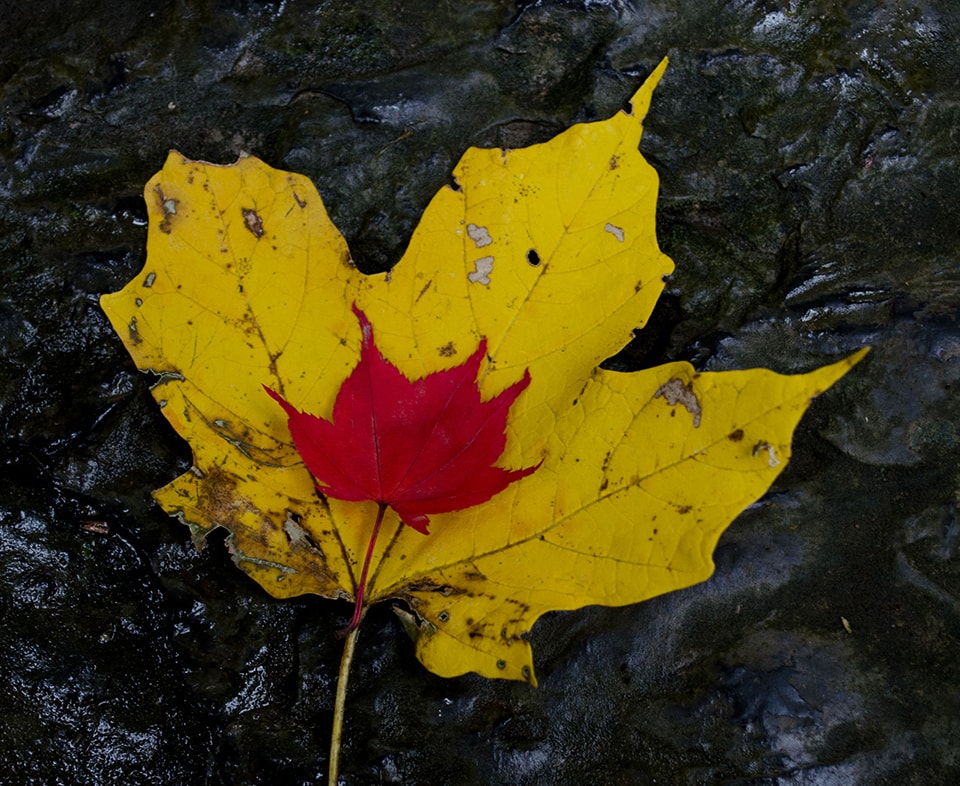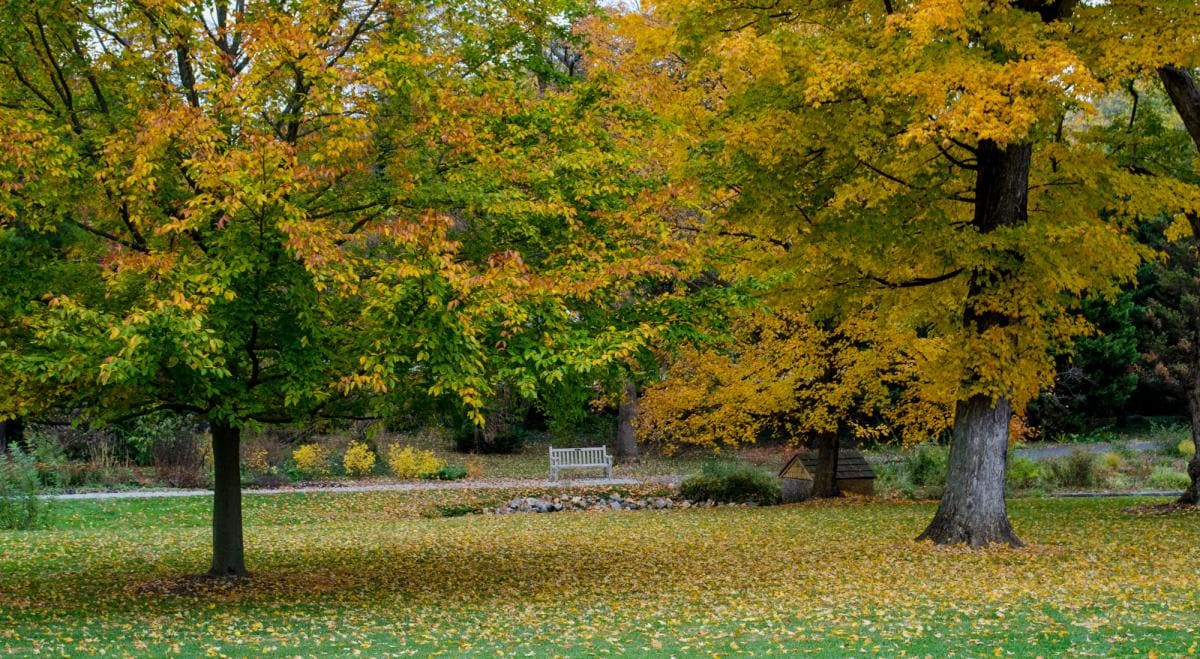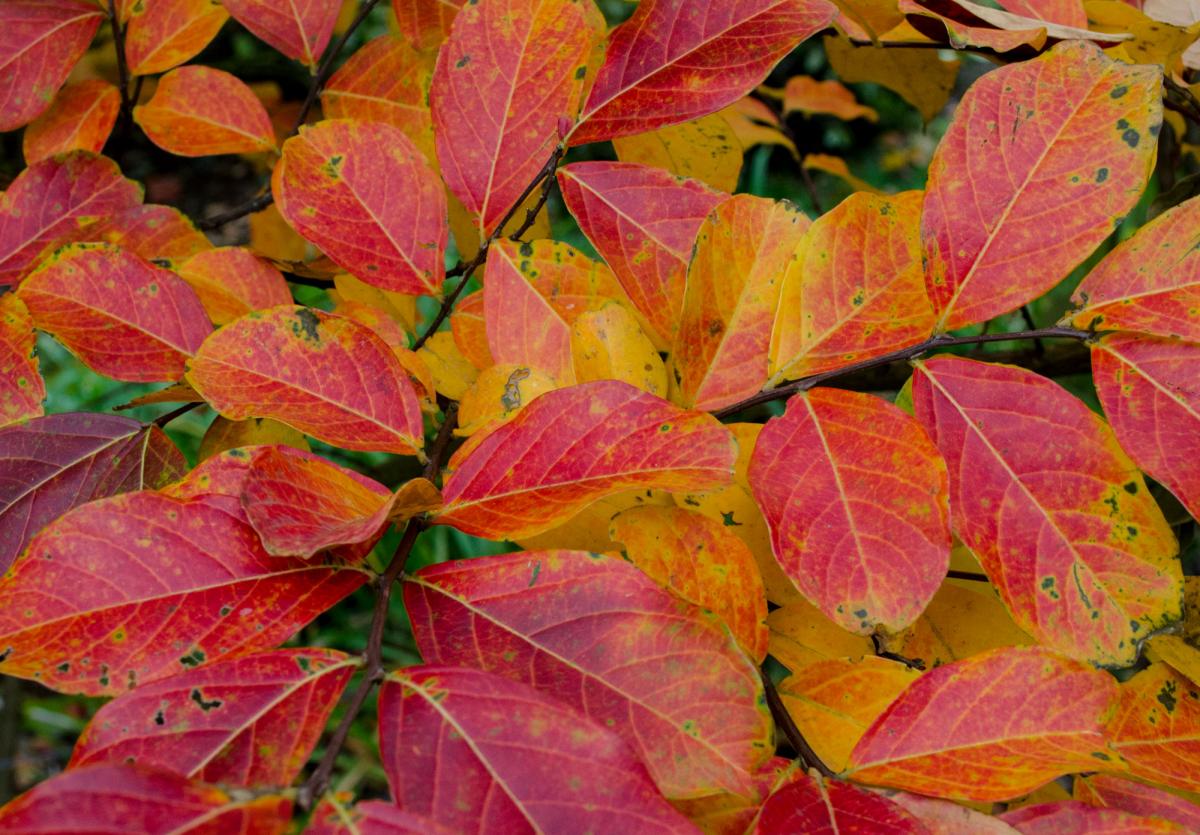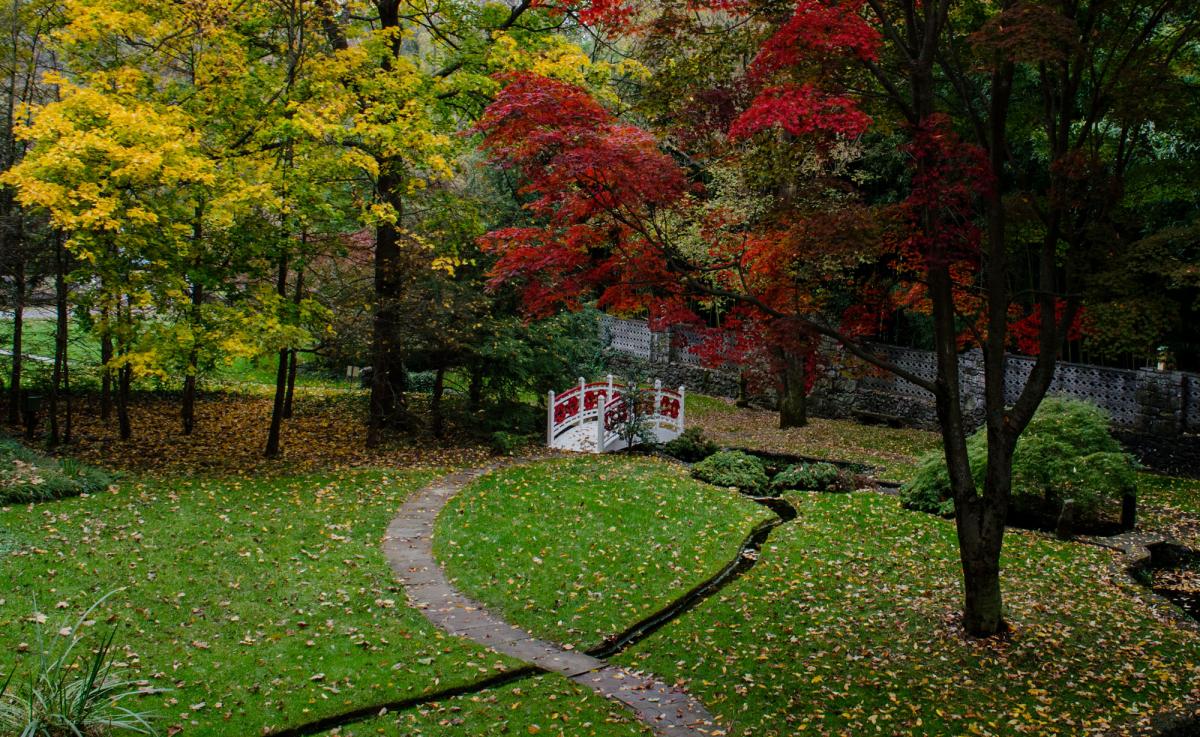Peak leaf season is upon us and the Garden is ablaze in fall foliage.
By Deputy Director, Museum Operations and Director of Gardens Perry Mathewes
But have you ever wondered why the leaves change color? Why are some trees red, others orange and yet others are yellow? Let’s talk.
There are several scientific articles that are more effective in describing this process and I will leave the technical explanations to them. Just read this article, and this one, and this one. So instead, let’s look at it in a slightly more anthropomorphic way.
When you walk around the garden in the summer, all the trees have green leaves. Like teenagers, they just want to fit in and all wear the same color – green. Sure, there are some variations of green, but effectively they all conform to that norm in fashion. Now, that green pigment in the leaves does serve a purpose. It comes from chlorophyll and is critical in photosynthesis, the process that enables to the plant to produce sugars needed for the plant to grow. And all summer long, the trees are happy in their green clothes.
As the season starts to change, the trees are getting older and less concerned about what other trees think. Like a grandpa starting to lose his filter and telling you exactly what he thinks, the plants start to show their true colors. The chlorophyll production is shutting down. As it does and disappears from the leaf, the other pigments are revealed. Carotenoids in the leaves give us yellows and oranges. Some trees also produce anthocyanins which give us various shades of reds. The combination of these pigments is greatly varied so you get a myriad of personalities with each species. The warm orangey tones of a sugar maple are comforting like a grandma that just made you cookies, while the screaming bright red of a Japanese maple might remind you of Auntie Mame.
Take some time to walk around our Garden and see the true colors of our trees. From the different maples to sweet gum, black gum, crape myrtle, dogwood, and beech, you will get a treat of personalities. But don’t focus just on trees. We have lots of shrubs that just as colorful, such as allspice, summersweet, sweet spire, viburnum, witch alder, and witchhazel. Even some perennials produce spectacular color like the spring starflower with its brilliant golden leaves. This truly a great time to be in the garden.



